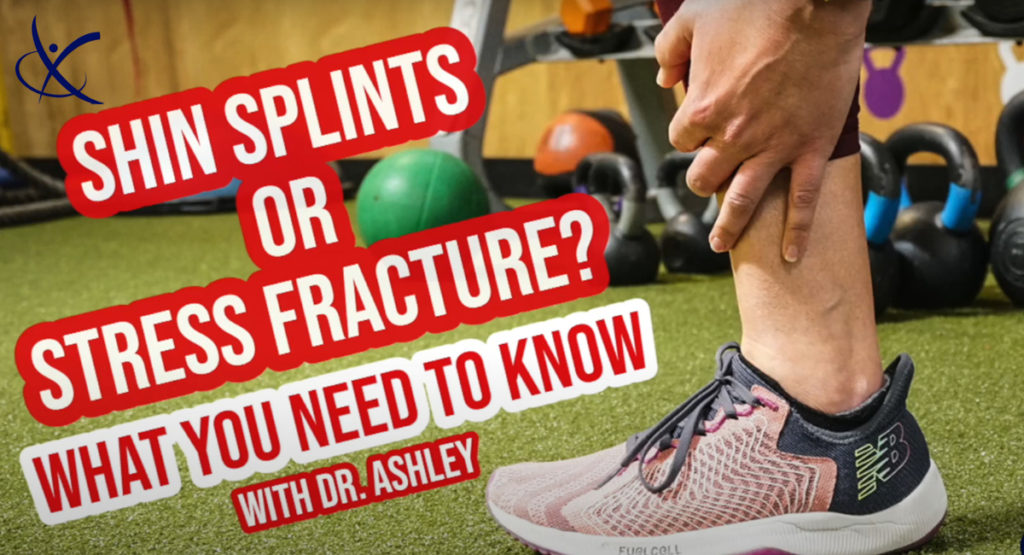Shin Splints or Stress Fracture?
What You Need to Know
Oh, the dreaded “shin splint”.
Every year during the change of seasons we see more and more athletes come into the clinic with shin pain. Why?
That’s a really good question.
More often than not this relates to doing too much activity too quickly. Some examples:
- A high school cross country runner who did not train over the summer starts practicing 5-6 times per week.
- A soccer player who had not been training now practices 5+ times a week.
- A tumbling athlete who used to practice 1-2x/week is now practicing 5.
The “shin splint” phenomenon (medically known as medial tibial stress syndrome), is common knowledge amongst most parents, coaches, and trainers. When an athlete complains of shin pain, this is the first thing that comes to mind. The problem with shin pain is it isn’t always as simple as that good ol’ shin splint. Sometimes, there is a bigger problem at hand. That is why I wanted to chat about shin splint versus stress fracture a bit. One is often mistaken for the other, which ultimately causes more harm than good.
So, what is the difference between a shin splint and a stress fracture?
To keep it simple, shin splints are an overuse injury of a muscle. When addressed early, they are easily treatable with activity modification and proper strengthening tasks. Stress fractures are small breaks in bone caused by repetitive force. These require time off from sport to let the bone heal, followed by a prescribed return to sport programming.
Now can you understand why mistaking a shin splint for a stress fracture could be detrimental?
So how may you differentiate whether an athlete is experiencing a stress fracture and not a shin splint? There are some clinical pearls that I would like to share.
Shin Splints normally improve with activity. Pain is worse after activity and in the morning. The pain is diffuse (> 5 cm in length) along the front of the shin region. These can be seen bilaterally.
Stress Fractures normally worsen with activity. Pain often subsides with rest and decreased activity and is better in the mornings. The pain is in a focal spot along the shin region (<5 cm in length). This is normally seen unilaterally.
